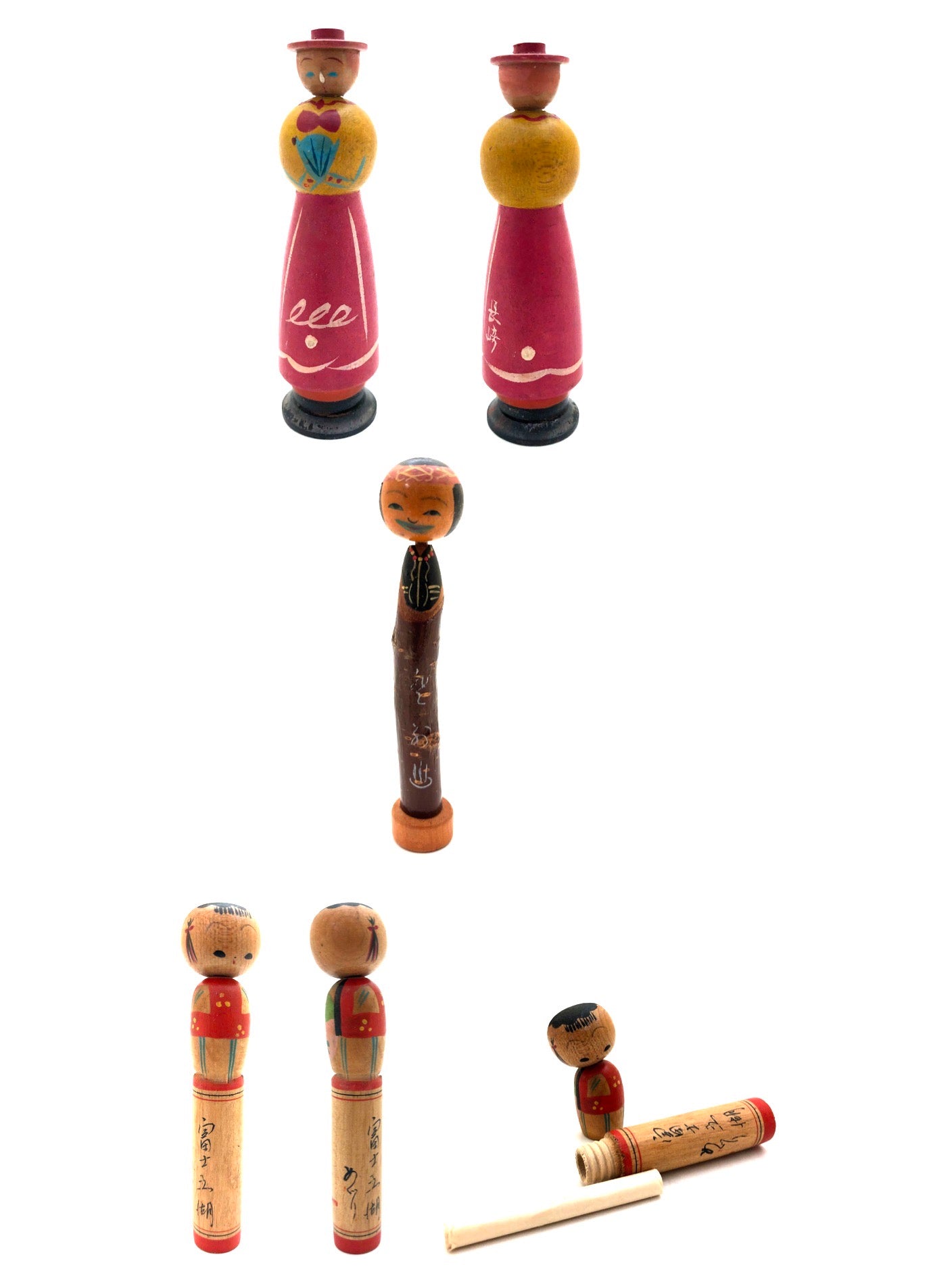
Japanese Vintage Sosaku Kokeshi "Mailer Doll” Set | Rare Historically Significant Folk Art
Dimensions: 3-1/8”h (#1) - 4-3/8”h (#2) - 3-3/4”h (#3)
This set which represents a Kokeshi mailer being offered was once a very popular souvenir and a fun way to roll notes and mail messages to a friend instead of using a yet-to-be-developed postcard. The Japanese simply placed a string and paper tag around the piece for mailing or brought them home to share with their friends. These were used and collected by families and children touring throughout Japan shortly after WWII.
Condition: Excellent original condition, fully functional, with a wonderfully developed patina caused by a great deal of care and limited use.
Kokeshi Mailer Doll #1 — This lathe-turn miniature was made to look like a Traditional Kokeshi “bobblehead” doll. The subject is of a Dutch settler who was influenced by the Dutch East India Trading Company travelers (18th/century). It is beautifully detailed and painted with traditional clothing, a unique hat made from a single piece of hollowed-out wood, and contains a personal note that is accessible after unscrewing the bottom. The carving is titled on the back but the craftsman is unknown.
Kokeshi Mailer Doll #2 — This lathe-turn miniature was made to look like a Traditional Kokeshi “bobblehead” doll and depicted an Ainu Man in traditional clothing made from the bark of the tree from which it was made and represents Hokkaido, the prefecture from which it was made. It is made from a single piece of hollowed-out wood and contains a personal note, with the unused note paper inside and that is accessible after unscrewing the bottom. The piece is titled with the onsen where it was purchased indicated and signed on the back but not translatable because of the age of the kanji (script).
Kokeshi Mailer Doll #3 — This lathe-turn miniature was made to look like a Traditional Kokeshi “bobblehead” doll and depicted a Geisha with clothing fully detailed. The head is of traditional doll design with side hair fringes and bangs. It is made from a single piece of hollowed-out wood and contains a personal note, with the unused note paper inside, (see image detail) and that is accessible after unscrewing the bottom. The piece is titled and signed on the back but not translatable because of the age of the kanji (script).
